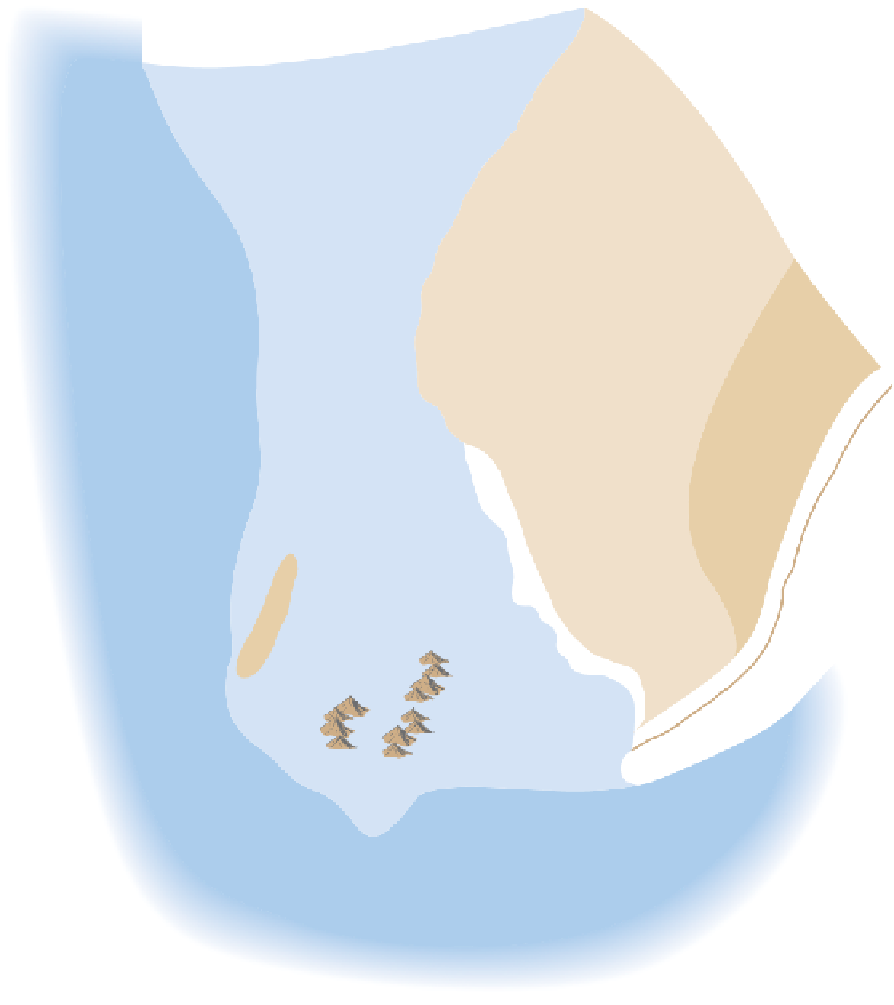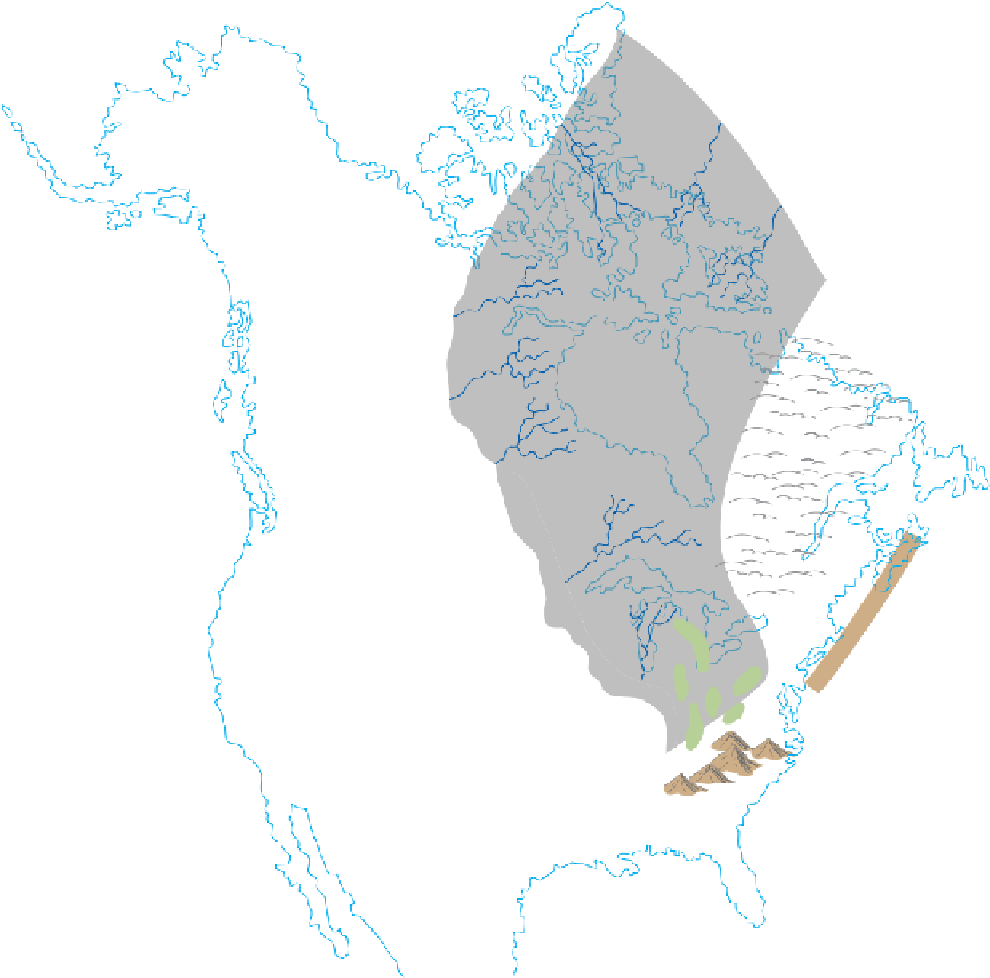Geology Reference
In-Depth Information
Lowlands
Uplands
Antler
Highlands
Ancestral Rockies
and basins
c
ai
Land
Mountains
Evaporites
Coal swamps
Volcanoes
Epeiric sea
Deep ocean
◗
Figure 20.17
Pennsylvanian Paleogeography of North America
MOBILE BELTS
Having examined the Paleozoic history of the craton, we
now turn our attention to the orogenic activity in the
mobile belts. The mountain building occurring during
the Paleozoic Era had a profound influence on the cli-
mate and sedimentary history of the craton. In addition,
it was part of the global tectonic regime that sutured the
continents together, forming Pangaea by the end of the
Paleozoic Era.
Throughout Sauk time (Neoproterozoic-Early Ordovi-
cian), the Appalachian region was a broad, passive, con-
tinental margin. Sedimentation was closely balanced by
subsidence as extensive carbonate deposits succeeded
thick, shallow marine sands. During this time, movement
along a divergent plate boundary was widening the
Iape-
tus Ocean
(
Figure 20.24a).
Taconic Orogeny
Beginning with the subduction of the
Iapetus plate beneath Laurentia (an oceanic-continental
◗


















Search WWH ::

Custom Search